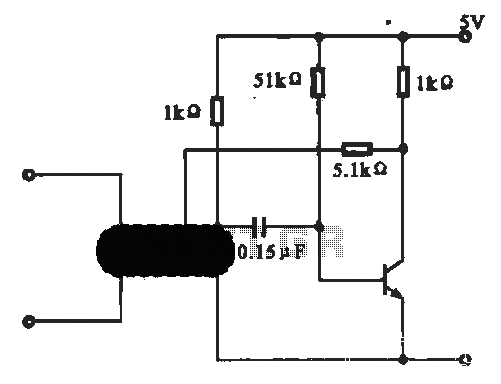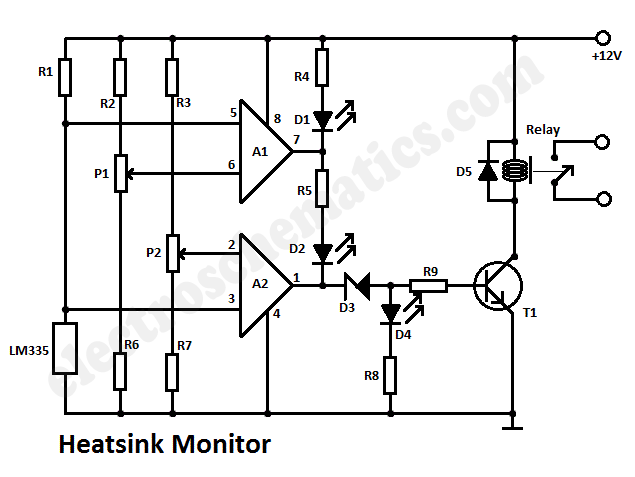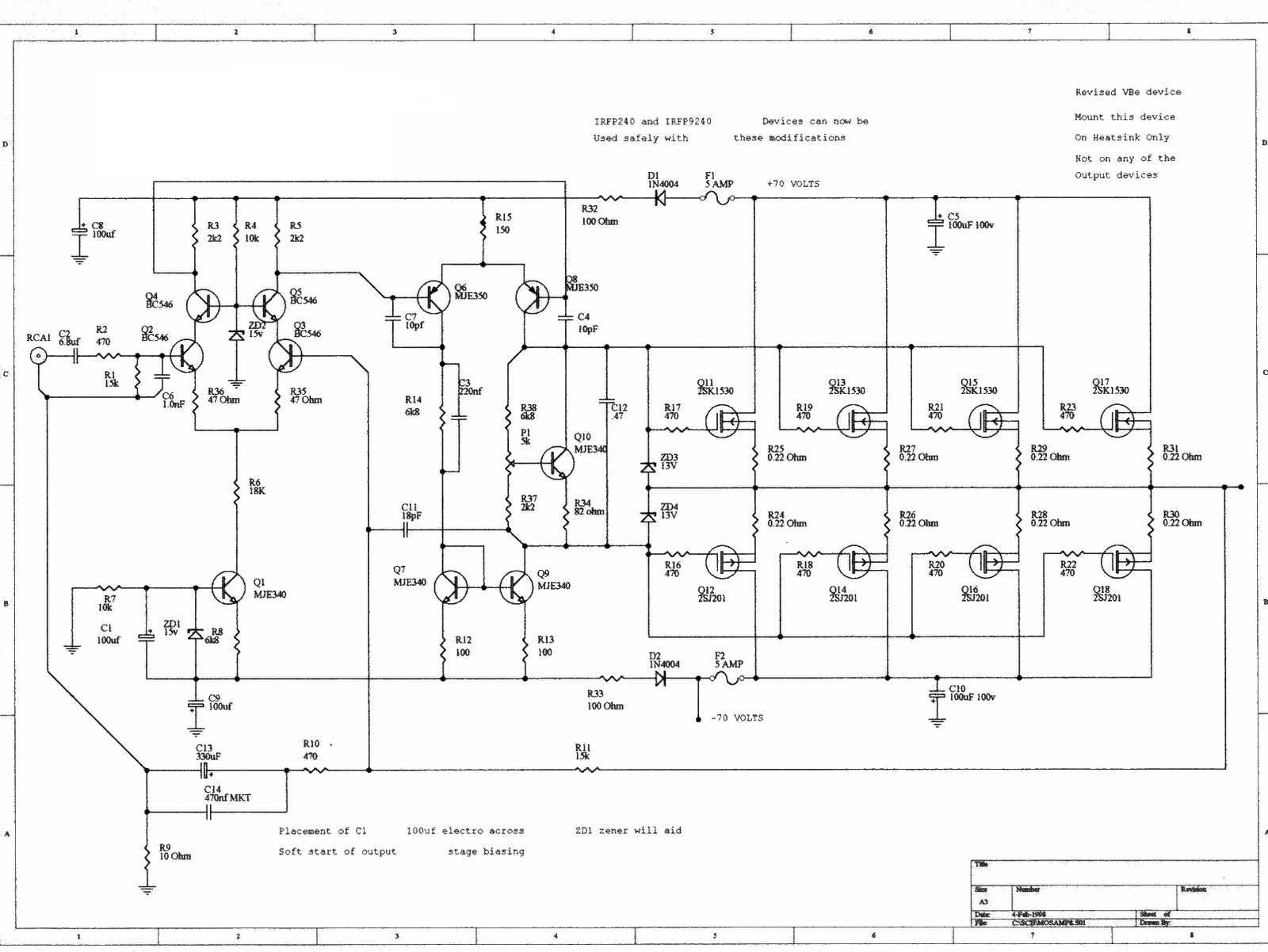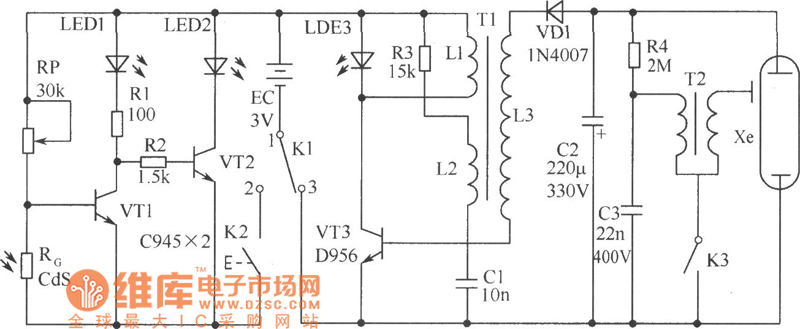
Oscillation circuit optocoupler control

This circuit illustrates an oscillator that is controlled by an optocoupler, utilizing photoelectric coupling to drive a transistor.
The oscillator circuit described operates by employing an optocoupler to provide electrical isolation between its input and output stages while allowing control signals to pass through. The optocoupler consists of a light-emitting diode (LED) and a phototransistor, which work together to transfer signals via light rather than direct electrical connections. This configuration is particularly beneficial in applications where noise immunity and signal integrity are crucial.
In this circuit, the LED of the optocoupler is driven by a control signal. When the LED is activated, it emits light that is detected by the phototransistor, causing it to conduct. The conduction of the phototransistor is used to switch the oscillator circuit on or off, effectively modulating the output frequency based on the input control signal.
The oscillator itself may be designed using various configurations, such as a relaxation oscillator or a square wave generator, depending on the desired output characteristics. Common components used in the oscillator circuit include resistors, capacitors, and inductors, which determine the frequency and amplitude of the oscillations.
This design is advantageous in applications such as signal processing, where precise timing and control are necessary, as well as in power supply circuits where isolation is required to protect sensitive components from high voltages or noise. The use of an optocoupler in this manner enhances the reliability and performance of the oscillator circuit, making it suitable for a wide range of electronic applications.It shows the oscillator circuit optocoupler controlled by photoelectric coupling drive transistor.
The oscillator circuit described operates by employing an optocoupler to provide electrical isolation between its input and output stages while allowing control signals to pass through. The optocoupler consists of a light-emitting diode (LED) and a phototransistor, which work together to transfer signals via light rather than direct electrical connections. This configuration is particularly beneficial in applications where noise immunity and signal integrity are crucial.
In this circuit, the LED of the optocoupler is driven by a control signal. When the LED is activated, it emits light that is detected by the phototransistor, causing it to conduct. The conduction of the phototransistor is used to switch the oscillator circuit on or off, effectively modulating the output frequency based on the input control signal.
The oscillator itself may be designed using various configurations, such as a relaxation oscillator or a square wave generator, depending on the desired output characteristics. Common components used in the oscillator circuit include resistors, capacitors, and inductors, which determine the frequency and amplitude of the oscillations.
This design is advantageous in applications such as signal processing, where precise timing and control are necessary, as well as in power supply circuits where isolation is required to protect sensitive components from high voltages or noise. The use of an optocoupler in this manner enhances the reliability and performance of the oscillator circuit, making it suitable for a wide range of electronic applications.It shows the oscillator circuit optocoupler controlled by photoelectric coupling drive transistor.





